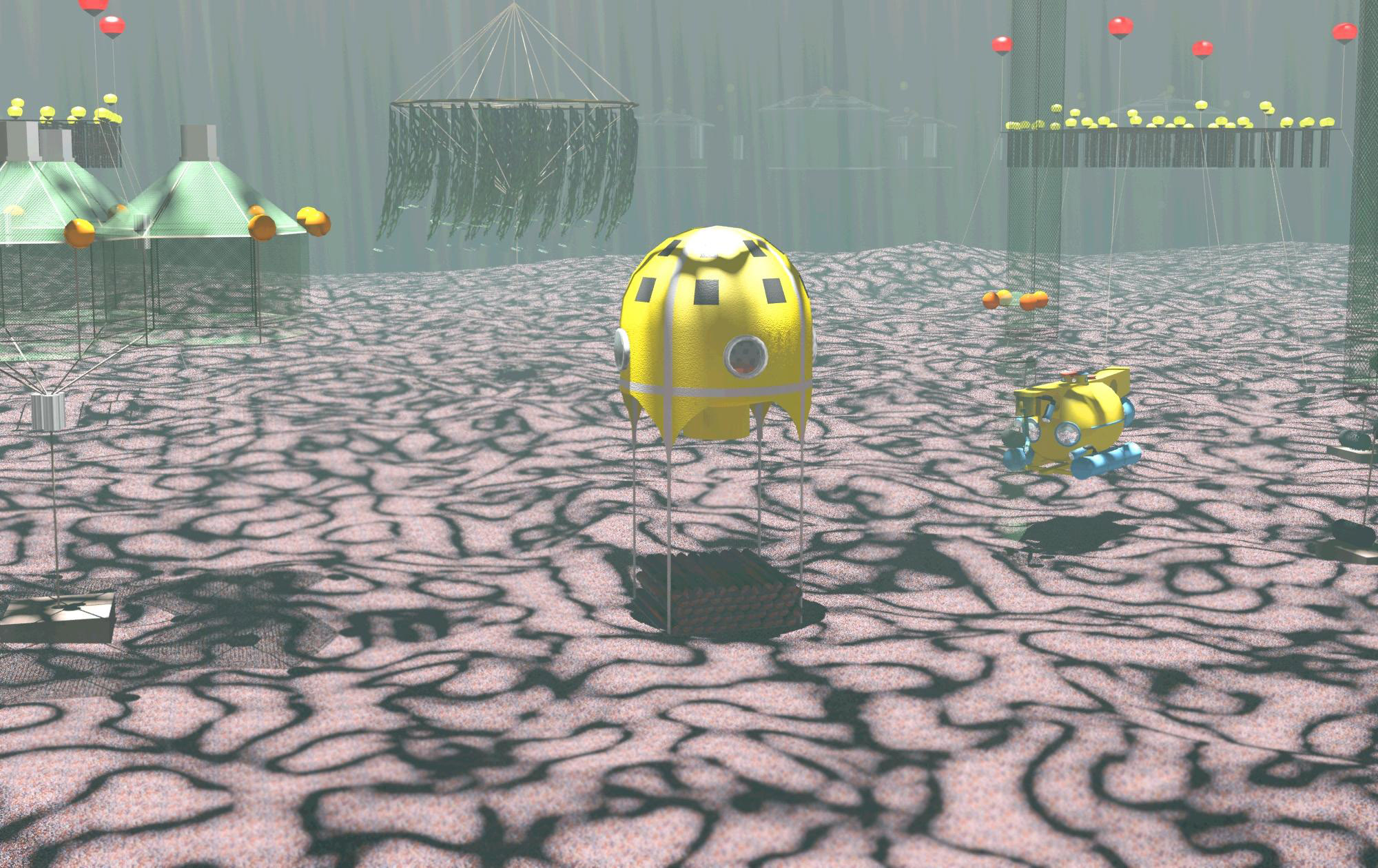Eco-friendly aquaculture must become the general way for seafood production. Unfortunately the typical way of aquaculture presently is intensive monoculture. This concept has several disadvantages from an environmental point of view. The environmental pollution is a very important problem in the intensive fish farming. It is well known that salmon rearing causes the washing out of 5-25% feed from the net cages that lead to undesirable eutrophication of Sea. Combining cage system with an artificial reef could solve the problem of the waste conversion. At the same time polyculture production systems could represent ways of increasing production volume and utilizing the biodiversity of marine ecosystems.
Artificial reefs that installed around the fish cage become inhabited with various filtering organisms. Waste products from the cage might be used as food for wild biota and contribute to the strengthening of bio-filtration belt, thus increasing the self-cleaning capability of the sea area. The first cage-and-reefs polyculture complexes of SADCO design have been tested at the Black and Caspian Seas in 1985-91. Nowadays the most advanced systems are termed Integrated Multi Trophic Aquaculture (IMTA) and combine the cultivation of fed species (e.g. finfish) with extractive species, which utilize the inorganic (e.g. seaweeds) and organic (e.g. mussels and deposit feeders) excess nutrients from the fed aquaculture.
 There are engineering and biological aspects that have to be consider as risk factors for sustainable aquaculture development in the open Sea areas. Among engineering aspects the main is risk of damage of floating cages because conventional floating cages at water surface cannot withstand against storm waves and ice fields. Key biological aspects are: storm wave's impact to fish and overheating of fish in the summer season.
There are engineering and biological aspects that have to be consider as risk factors for sustainable aquaculture development in the open Sea areas. Among engineering aspects the main is risk of damage of floating cages because conventional floating cages at water surface cannot withstand against storm waves and ice fields. Key biological aspects are: storm wave's impact to fish and overheating of fish in the summer season.
Submersible SADCO cage system is the solution for offshore aquaculture. This is the way to avoid conflicts between users, reduces risk of fish overheating, cage damage by storms, drifting rubbish or ice and enables successful fish farming in open sea areas. IMTA sea farms based on submersible SADCO concept are able to produce different fin fish species, macro algae, oysters and mussels as excellent seafood and row material for new pharmaceutical and cosmetics products, as well as may be a way to remove extra nutrients from the Sea environment.


